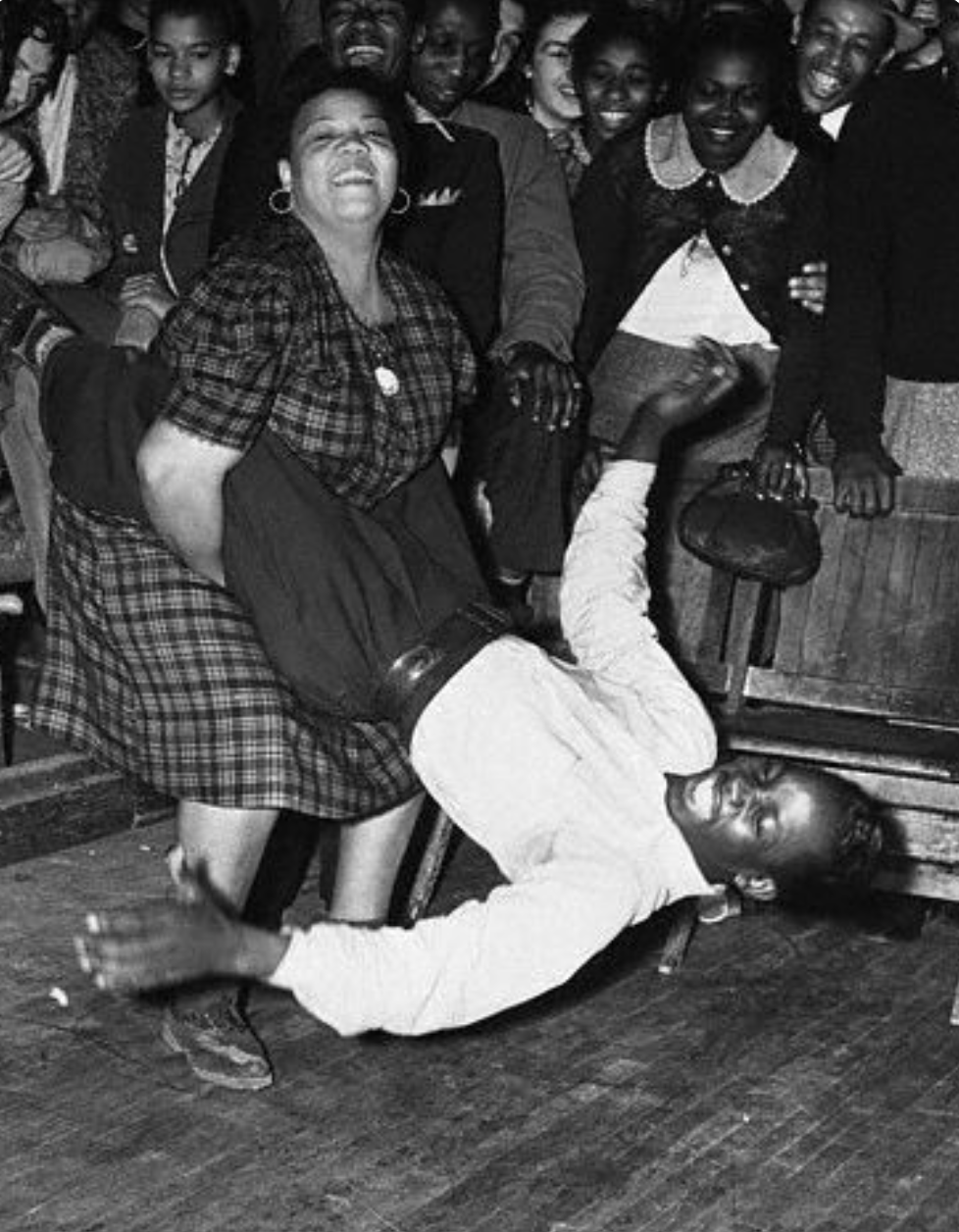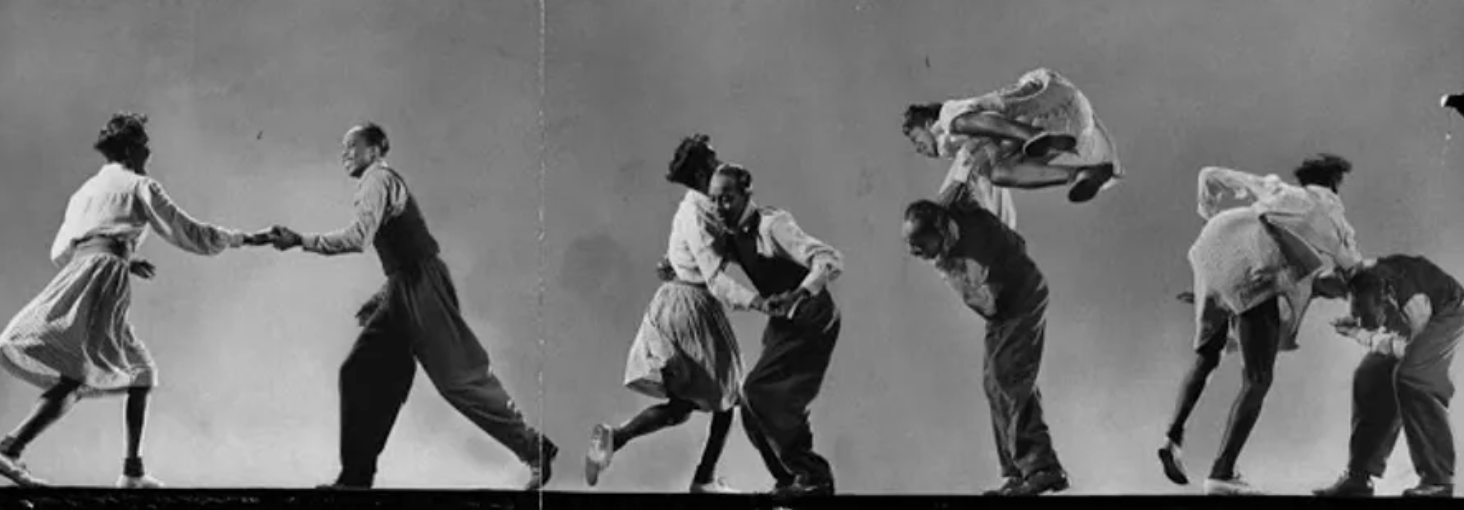is a vibrant and energetic partner dance that originated in the black American communities of Harlem, New York City, during the late 1920s and early 1930s. It emerged as a response to swing jazz music that was popular at the time. Lindy Hop evolved from earlier dances such as the Charleston, the Breakaway, the Texas Tommy, the Cakewalk, incorporating elements of jazz, tap, and other black American dance styles.
During the height of the swing era, Lindy Hop became a cultural phenomenon, spreading from Harlem to other parts of the United States and even internationally. It was a dance of joy and liberation, reflecting the exuberance and resilience of the black American community during a time of racial segregation and economic hardship. Lindy Hop is characterized by its improvisational nature, allowing dancers to express their individuality and creativity.

Many of the dancers that made and developed the dance to what it is today were regulars at the famous Savoy Ballroom. Just to name a few: Shorty George Snowden, All Minns, Norma Miller, Willa Mae Ricker, Frieda Washington, Sugar Sullivan, Barbara Billups and Frankie Manning. Frankie Manning, belonging to the second generation of Lindy Hoppers, was an innovator, choreographer and together with others, became a role model for today’s dance scene.
Boogie Woogie (from the piano music style boogie woogie) is a dance mostly danced to 50’s Rock’n’roll, Rhythm’n’Blues and piano boogie woogie. Boogie Woogie is clearly a dance that has its roots in jazz dances. Nowadays, it is mostly recognised because of its competition scene, but it can be danced socially.
Jazz dances embody the spirit of joy, resilience, and cultural expression, and they continue to captivate dancers and audiences worldwide with their infectious energy and rich history.

Willa Mae Ricker and Leon James Life Magazine 1943, Whiteys Lindy Hoppers